Views: 82
從網友 Kevin 那裏看到一篇很好的介紹 Barolo 的文章,我常常翻閱。為了方便,我乾脆把部分內容轉貼于下。希望 Kevin 不會介意。
Kevin 的原文見﹕
http://hk.myblog.yahoo.com/jw!B9aLLeCDBRIW8mbpMSlGFdwzkFNY/article?mid=2492
我輯錄的部分為 "Stars of Barolo",原本來自 Coltrainwine newsletter。評為最好的三星 Barolo producers 共有六位,個人覺得十分公允。但 Angelo Gaja 也應該是三星之選。
我從 Sheldon Wasserman 的書轉載了釀酒大師的歷史照片。
很有趣的是﹕高傲的 Angelo Gaja 曾高度推許 Bruno Giacosa﹕
"Besides my father – and I hope myself – Bruno Giacosa is not only one of the greatest negociants in Italy, he is also, without a doubt, one of the greatest experts in the best crus in both Barbaresco and Barolo."
在下面引述的文章裏,聽到謙虛的 Bruno Giacosa 有這樣的一番話﹕
About ten years ago I asked Bruno Giacosa who the best Barolo maker is and in his renowned mumble he answered, “Bartolo Mascarello.”
惺惺相惜!
如果 Piedmont 有 Grand Cru 的制度,這七位大師應該是眾望之選。
STARS OF BAROLO
[from Coltrainwine newsletter, 2002]
3 STAR MAKERS
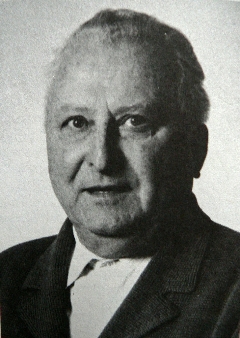
Guiseppe Rinaldi
Beppe Rinaldi was shocked last month. His 1997 Barolo had just been awarded the top three glass rating from the Italian wine guide 2002 GAMBERO ROSSO. He was shocked because this magazine usually embraces modern winemakers and is known not to refuse friendly “donations.” Rinaldi like all the three star makers does not make “donations” to wine reviewers. He shook his blond head and said , “All I can figure is that those people are trying to capture some credibility that they have lost among knowledgeable wine tasters over the years.” Despite the Three Glass rating, Rinaldi’s Brunate Riserva bottlings (Brunate is a large vineyard, located in the Communes of Barolo and La Morra, of which the Rinaldis own a prime piece) are some of the most mind blowing Barolos you can buy. This man is a fanatical traditionalist. For me, the 1990 of his Brunate was the finest traditional style wine of that excellent vintage. It had power and grace, and side-stepped the pitfall of too much alcohol. It will age for at least 20 years after its vintage. He allowed me to taste all of his recent Barolos. They were all Brunate/Le Coste (a vineyard beneath his villa). They pretty much follow style of vintages. The 1996s were firm. The 1997s are all fruit and baby fat. The 1998s were like 1996 but not as hefty. The 1999 from barrel was the lightest. The 2000 from the barrel was weightier and sublime. Beppe was optimistic about them. There was a just bottled 1995 that was surprising for its softness and drinkability. It was a blend of 80 percent Brunate and 20 percent Le Coste, not the pure Brunate, which explains the early access. Beppe appears to have better success in weak vintages than his father, Battista. But can he produce the great stuff in the great years (his father played a major role with the 1990 Brunate Riserva)? The 1996s and 1998s give an emphatic, “si.”
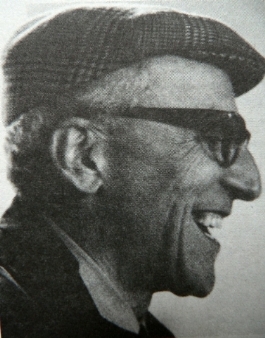
Bartolo Mascarello
"No Barrica, No Berlusconi,” is Bartolo’s new motto. It is said that Beppe Rinaldi’s cousin, is not quite the eccentric of old. I couldn’t say because I’ve yet to meet him. But I’ve heard the stories about his black flag of anarchy and his refusal to use a telephone, until a few years back. I’ve tasted a lot of his wine and they are marvels in the world of liquid gastronomy. He is to wine what Nabokov was to writing. About ten years ago I asked Bruno Giacosa (also in this list of three star makers) who the best Barolo maker is and in his renowned mumble he answered, “Bartolo Mascarello.” I’ve tasted this man’s 1961 and 1964 wines recently and they are suave, refined old gentleman. If you taste the 1989 and 1990 vintages, you will see what this man is all about. They are paragons of balance and complexity. They are pleasant when young because of their satin texture. Bartolo doesn’t bottle single vineyard wines, but blends several vineyards, to maximize complexity. It works. The wines are true characters as is he.
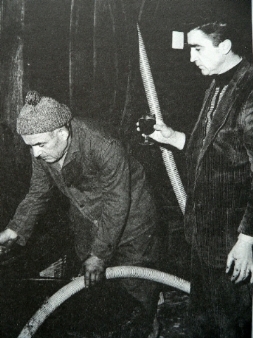
Bruno Giacosa
Only a few people know the vineyards of Barolo better than Bruno Giacosa because he’s made wines from many sites in the zone. Incredibly, until 12 years ago, he owned no vineyards and bought all his grapes. His most notable purchases came from Rionda in Serralunga and Villero in Castiglione Falletto. Today he owns the Falletto vineyard in the Serralunga Commune. Wines from here and the Rionda vineyard are his two titans. I’ve had great fun watching the evolution of these three vineyards from the 1990 vintage because they reflect the personalities of the vineyards. Giacosa was the first to tutor me on the importance of a fine vintage for Barolo to show as it should. The 1990 Villero has been the first to come out of its cocoon. By 1996 its color began to turn from garnet to a lighter red with tawny edges. On the palate it was round with sweet cherry fruit. It seemed to be approaching prime time. The 1990 Vigna Rionda has been less precocious. It draws you in with chocolate and port aromas. It has dried fruit flavors with substantial tannin. The 1990 Falletto is a monster, armored with tannin, smoke, mushrooms and underbrush notes. It’s a lifer, needing years of aging. It is all that a Serralunga Barolo should be. Giacosa’ s ’96 Barolos are among the best he has ever made. The 1996 Falletto Riserva is one of the greatest Barolos I’ve ever tasted. If you find it, buy it. It is worth every cent of its $150+ price.
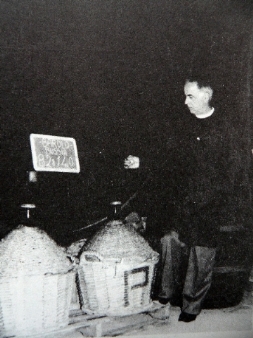
Aldo Conterno
Here is a friendly man who operates his winery with his three sons at a bend in the road about halfway between Monforte d'Alba and Castiglione Falletto. Aldo speaks perfect English because he served in the American army in Colorado Springs after World War II. His wines are much like him. They are not closed and difficult, but extroverted and fun. In a good vintage he bottles four different Barolos–Bussia Soprana, Cicalla, Colonnello and Gran Bussia. The last three are his top wines. Cicalla and Colonnello are single vineyards, while Gran Bussia is normally a blend with most of the grapes coming from the Romerisco and Ciabot vineyards. It is only made in exceptional vintages. The Cicalla bottling is the longest aging, while the Colonnello drinks better young. Neither overwhelm you with tannins in youth. The Gran Bussia is aged the longest and is surprisingly drinkable upon release. I drank a 1988 Gran Bussia in 1996 that was perhaps the red wine of that year. But I drank a 1982 Gran Bussia in 1997 that was a bit tired. This leads me to believe that the wine is no huge ager, but I'd like more evidence. Conterno is generally a traditionalist, though his sons have shaded his views with modernist ideas. They make a "barrica" aged Nebbiolo called "Il Favot" and they also make two kinds of Chardonnay. "All these are the boys' wines," Aldo says. A short time ago we tasted the just bottled 1996 Gran Bussia together and it showed extraordinary stuffing and style.
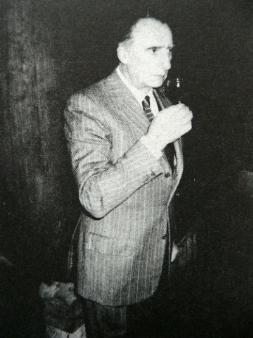
Giacomo Conterno
Aldo Conterno's brother, Giovanni, is a lot like him, though he doesn't speak English as well. He is working with sons who also appear to be moderating his traditional ideas about winemaking. Most of Giovanni's vineyards lie in the Serralunga commune. There, his ownings are collectively called "Cascina Francia." From these he produces a Barolo called "Cascina Francia" and in exceptional vintages his revered "Monfortino." Years ago these wines would see from eight to ten years in "botti" (huge oak casks) before release. They were apocalyptic. I tasted a 1971 Monfortino in 1988 that was possibly a decade or more away from its prime. In contrast, a 1987 Monfortina (a lesser vintage than 1971) was approaching its peak when tasted in 1996. That wine, by the way, was the best I've tasted from the vintage. Also, in 1996, I sampled the 1989 Cascina Francia and the 1990 Cascina Francia with Giovanni at the winery. The wines were surprisingly approachable with the 1989 being the bigger and, for me the better of the two. The 1990 was almost feminine in comparison. Both wines were marvelous and remarkable for having such immense fruit and depth of flavor too. They fly with the best wines from those two vintages. Though I didn't spot any new "barricas" in Conterno's cellar, I did see steel fermentation tanks and the gadgets visible in every modern winery in the world. These and the wines lead me to think that Giovanni Conterno is not the obdurate traditionalist he once was. But does it matter? His wines are still great. They just don't require 20 years of cellaring to drink enjoyably.
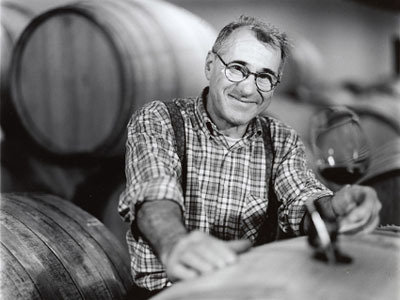
http://www.vintuswines.com/beta/images/estate_images/sandrone/2_sandrone_luciano.jpg
Luciano Sandrone
Yet another lovely man in this region. He works in a state of the art winery, across the road from the Cannubi Boschis vineyard, where he tends vines. Usually Sandrone is considered one of the top three modern style Barolo makers along with Domenico Clerico and Elio Altare. It's a tough call, but in my mind he is the best of the modernist. His wines and winery are carefully though out. It is here that visitors can taste his superb Dolcettos from the steel tanks. In cool, aging rooms lie rows of barrels for the Barolos and Barberas. There two key points for these barrels–they are not 225 liter "barrique," but 600 liter "foudres" and they are not toasted. Due to this larger size and lack of toasting you don't have the invasive oak sensed in many of the modernist makers. The first wine to make me a Sandrone devotee was the 1990 Cannubi Boschis Barolo. It was a deep and powerful wine with perfect integration of oak and fruit. It dances a tango on your tongue. For me it's the best "modern style" Barolo of 1990. I just tasted his '98 Cannubi Boschis and '98 Le Vigne. The Cannubi Boschis offered violets on the nose and red fruits on the tongue. The Le Vigne was simply spectacular, one of the vintage's finest. It needs lots of time.
TWO STAR MAKERS
Elio Altare: Here you might have the most fervent of the modernist Barolo makers. He is bewitched by the "barrica" and his fermentations are always controlled in stainless steel tanks, not wood vats. He makes a good Barolo from his Arborina vineyard in the La Morra commune. But at times I find the wines overly masked by the "barrica" derived oak. He also makes a "barrica" cured Barbera, Vigna Larigi, that is one of the best made in all of Italy .
Domenico Clerico: This maker is an experimenter and innovator. He is not just a "modernist," but a "futurist" maker. In good years he makes two vineyard bottlings–Pajana and Ciabot Mentin Ginestra. The wines are usually similar…stylish and complex. There seems to be enough tannin to age pretty well. The oldest I've tasted is a 1993 Pajana and it balanced and beautiful. Things change so fast here that the old wines are different in their making than those current. One of Clerico's experiments has been with fermentation in "barricas." He makes a wine called "Arte" that has some "barrica" fermentation. The wine is 90 percent Nebbiolo and 10 percent Barbera. It is soft and sensual.
Ceretto: Marcello and Bruno Ceretto make four different Barolos from vineyards scattered about the region. Their Zonchera Barolo is made from purchased grapes and is often round and packed with dried fruit flavors. They make a Barolo from the Brunate vineyard that drinks well young. Not surprisingly their biggest wine comes from the Serralunga commune, Prapo vineyard. I think their best wine comes from the Bricco Rocche vineyard beneath their stunning winery on a hilltop over Castiglione Falletto. This wine is often a fascinating paradox. It can be delicate, yet vigorous. There are tannins, but they are normally soft. It drinks well early, but can age five or ten years in a good vintage. Actually, other than the Prapo, all Ceretto's Barolos drink well young and don't really seem to age for a great time. I've tasted all their '95s, '96s, '97s and '98s. The '96s and '98 shone brightly. They make four different Barbarescos (Asij, Bernadot, Faset, Asili). The Asili is the finest. The future looks bright for Ceretto because Marcello's 26-year-old son, Alessandro, is taking over wine production. He is obsessed with quality and his impact is visible in the latest bottlings.
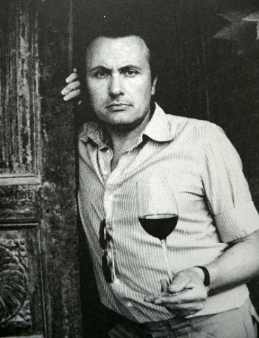
Angelo Gaja: I have great respect for this man because when his campaign to allow different grape varietals in the exclusively Nebbiolo based Barolo and Barbaresco he reclassified his three cru Barbarescos and Sperss Barolo to Langhe Rosso, a lesser appellation. He didn't cling to the more prestigious appellations and sneak Cabernet Sauvignon in the blend as others are said to be doing. Of course Gaja is Gaja and his name virtually supersedes any wine appellation. With his gifted winemaker, Guido Rivella, makes some of the most stylish wines in the zone. His erstwhile Barbaresco, Sori Tilden, is always one of the most formidable wines in a good vintage. His erstwhile Barolo, Sperss, is normally chunky and round, approachable when young. He also makes a Barbaresco Normale, blended from several vineyards, that can be among the elite in a good year.
Vietti: I haven't tasted many wines from this maker lately. In the past, the Currado family fashioned excellent Barolos from several different vineyards in the Castiglione Falletto Commune. Their own vineyards only provide 25 percent of their production, so they buy grapes from various small growers. Though they are rooted in the traditional standards of Barolo, their "cantina" is outfitted with modern equipment and some "barricas." The best bottlings come from the Rocche di Castiglione and Villero vineyards. The wines are characteristic of the Castiglione commune, where they are born. That is, they combine elegance and power.
Paolo Scavino: Though Enrico Scavino's cellar holds seven rotary fermenters and scores of new "barricas," I wouldn't call him a fullblown modernest. I'd call him a moderate modernist. This description came from drinking his wine and talking to his daughter, Enrica. They are aware of the dangers of too much oak and extract. They want to make wines that taste like Barolo, not an Australian concoction. They makes clean, fairly precocious wines that tastefully framed oak. His two best bottlings are the Cannubi di Barolo and the Bric del Fiasc, located in the Castiglione Commune. I find the Bric del Fiasc to be the better. It normally has more elegance and sweeter Nebbiolo essences. But both wines can be drunk relatively young, i.e., six or seven years post vintage.
Prunotto: A few years back this winery was purchased by Antinori of Tuscan renown. So far, I haven't noticed any dramatic changes in the wine. The wines have historically been old style with firm tannin and long aging potential. In a good vintage, three bottlings are released–a generic Barolo, a Bussia and a Cannubi. Generally the Bussia is a little bigger than the Cannubi. Both wines are chewy, long aging wines. I don't know if I've ever drunk a Prunotto Barolo at its peak. I drank a 1974 in 1990 and it had lost its fruit and was astringent. So these wines seem tricky for predicting their maturation rates. They also make several good Barbarescos.
Marcarini: Not many years ago, I (and many other people) considered Marcarini's Barolos among the best produced, but in recent vintages they seem to have lost some horsepower. They are still quite good, but not the finest made. When Elvio Cogno made the wines they seemed more substantial. About 4,000 cases of Barolo are made from two different sites in the Brunate vineyard. They are called La Serra and Brunate. In general La Serra is the fruitier and more forward of the two. The Brunate has more depth and will age slightly longer. The differences aren't extreme.
Renato Ratti: Like Burgundy , no man will completely understand Barolo. The late Renato Ratti came awfully close. He produced maps to demonstrate the diversity of microclimates. He wrote essays, lectured the world on the wine and tasted the world on the wine. Still, he would never claim to completely understand it. He was one of the first "modernist" makers, who urged his fellows to reduce the tannins of young Barolos by cutting maceration time and inducing malo-lactic fermentation immediately after the alcohol fermentation was finished. This is directly opposite to what a traditional maker like Beppe Rinaldi would do ("The malo-lactic fermentation comes when it wants to," says Beppe). Currently, Ratti's nephew, Massimo Martinelli, and his two sons, Pietro and Giovanni, bottle two crus from their Marcenasco vineyard in La Morra. These are Conca and Rocche. Both are fine.
La Spinetta (Rivetti): Beside making utterly delicious Moscato d'Asti, this family bottles several vineyard designates of Barbaresco. One sip tells you they are modernist in philosophy. The wines are highly extracted and vanilla scented. But they aren't buried in lumber. I've been particularly taken by the Starduri vineyard bottlings. The Rivettis are one of the rising stars in Italy and in foreign countries.
Roberto Voerzio: Here is a maker whose star has risen in the last decade. Among Barolo devotees, he is recognized for his three vineyard bottlings–La Serra, Brunate and Cerequio. Like Marcarini, La Serra is soft in the La Morra style from where it comes. These are hugely extracted wines. The Brunate is rounder and velvety on the palate. For me the Cerequio is the best, the real deal. In a good vintage, it gives a cannonade of fruit, "goudron" and tannin. Seemingly it will age, though I've never had a bottle older than 1988. This is a wine and a man to look for.
ONE STAR MAKERS
Gianfranco Alessandria: His vineyards are in the Bussia locality of the Monforte commune. He ages part of his Barolo in new 500 liter barrels. This results in a harmonious and smooth Barolo.
Azelia: Luigi Scavino makes a good Barolo from the Bricco Fiasco in Castiglione Falletto. He ages the wine in French "barriques." Barolos from a newly acquired Serralunga vineyard are coming.
Elvio Cogno: Cogno makes his wine in the Barolo commune of Novello. His vineyard is called Ravara. The wines are normally soft and pleasing, maybe a bit simple. I haven't tasted his wines in a couple years. Previously, he was traditionalist in style.
Giuseppe Mascarello: This old producer bottles a Barolo from its Monprivato vineyard in Castiglione Falletto. A bit simple, but well above average.
Francesco Rinaldi: This Rinaldi bottles two different vineyard designates–Cannubio and Brunate. As one would expect, the Cannubio is usually the firmer of the two.
Gianfranco Bovio: Bovio produces a feminine style Barolo from his Annunziata vineyard, beneath his restaurant, Ristorante Belvedere, in lofty La Morra. By the way, the restaurant really does have a "belvedere."
F.lli Brovia: This is a winery in motion. The "cantina" has been renovated and new vineyards purchased. They currently bottle several vineyard designated Barolos from Castiglione Falletto.
Conterno Fantino: Three men (Guido Fantino, Claudio Conterno and Diego Conterno) are doing an excellent job here. The top Barolo is the Sori Ginestra, from the Monforte d'Alba commune. They make a popular Nebbiolo and Cabernet Sauvignon blend called, "Monpra."
Fontanafredda: This is an enormous operation with vineyards scattered about the Piedmont . Their several vineyard designated Barolos and Barbarescos usually are pleasant, early drinking wines. The Lazzarito bottling, from Serralunga, is normally the most serious product.
Elio Grasso: A reformed banker, Elio Grasso has been making wine in Monforte d'Alba since 1978. Of several vineyard designated bottlings, his best is the Vigna Casa Mate.
Moccagatta: Three different vineyards (Basarin, Bric Balin and Cole) in Barbaresco are bottled here in good vintages. They are modern style. I find the wines excessively oaky and needing ten years to mellow in general.
Monfalletto: The Cordero family produces two remarkably different wines from vineyard holdings in La Morra and Castiglione Falletto. They are called respectively Monfalletto and Enrico VI. The Monfalletto drinks well young and the Enrico VI requires some age. They are usually good values.
Paitin: The Pasquero Elias family makes an easy drinking Barbaresco from its Sori Paitin vineyard in the Neive commune. It's in a modern style, but not excessively so.
Pio Cesare: Long an adherent of traditional Barolo making, this maker has been experimenting with modern techniques. I find the wines and the operation enigmatic. It produces a Barolo that is a blend of different vineyards and a single vineyard wine, Ornato, from the Serralunga zone.
E. Pira & Figli: Maker/Owner Chiara Boschis is the darling of the Italian wine press and all peregrinating wine critics who wander into her gaze. She tends two Barolo vineyards, Cannubi and San Lorenzo . Her rotary fermenters help her succeed in lesser year. For instance, her 1994 and 1997 were two of best of their years. Much of her production is confused.
Luigi Pira: I can't quite figure this cantina out. They work three vineyards (Margheria, Marenca and Rionda) in the Serralunga commune. The wines are hugely extracted, almost resembling Syrah in color. Though the Rionda is the youngest vineyard (7 years), it is usually the best of the three.
Rocche dei Manzoni: Valentino Migliorini makes three vineyard designated Barolos–Vigna d'la Roul, Rocche and Vigna Big. The first two are a tad soft for Monforte Barolos. The Vigna Big is their biggest wine. They make a fine Nebbiolo/Barbera blend, Bricco Manzoni, that is aged in "barriques." I will be curious how they do with the lately acquired Pianpolvere vineyard.
Mauro Veglio: This neighbor of Elio Altare appears to be under his influence, i.e., "barrique" aging is evident. He has two bottlings–Rocche dell Annunziata from La Morra fruit and a blend of Monforte and La Morra fruit. Not surprisingly, as Altare's friend, he makes a good "barrique" aged Barbera.
Eraldo Viberti: I've only tasted one bottle of this man's wine, a 1993 Barolo from La Morra. It was impressive. He seems to be a maker to consider seriously.
Aldo Canale: It used to be that a visit to this "cantina" was like losing a century in time. It was dark, dank and not the paragon of cleanliness. But, when I stopped by in the spring of last year, it was clean and well lighted. There were even three new stainless steel tanks amid the ancient oak "botti." He makes a formidable Barolo from his Rionda vineyard in Serralunga. He used to sell most of these grapes to Bruno Giacosa. I don't know what the arrangement is now and… I don't ask.
Thanks for your share